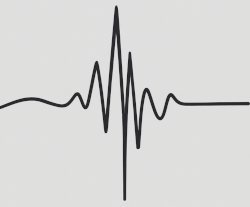115 CE Trajan Quake










In the early morning of what was probably the 13th of December in 115 CE,
Antioch was struck by a powerful earthquake, the
115 CE Trajan Quake, which caused widespread
building collapses and heavy loss of life. The disaster is well
documented, likely in part because Roman Emperor
Trajan
was in Antioch at the time, using the city as his base for campaigns against
the Parthian Empire. The date is provided by
Antiochene chronicler
Johannes Malalas, writing in the 6th century CE,
who may have drawn on the Antioch City Chronicles.
The fullest account comes from Roman senator and historian
Dio Cassius (c. 165–c. 235). Although writing a century later,
his narrative is so vivid and evocative of direct observation that it
strongly suggests he had access to an eyewitness account.
Dio emphasized that while many cities were affected, “Antioch was the most unfortunate of all.”
He describes a sudden “great bellowing roar” followed by a
“tremendous quaking.” The ground was upheaved, buildings
“leaped into the air,” some collapsing in pieces, others tossed
about “as if by the surge of the sea.” The noise of “grinding and
breaking timbers together with tiles and stones” was
frightful, and the dust so thick, that “it was impossible for one
to see anything or to speak or hear a word.” Even trees were
uprooted and “leaped into the air, roots and all.” Wreckage
spread far into the surrounding countryside.
Dio also notes rockfalls, probable landslides, and disruption of
hydrology: streams disappeared while new springs burst forth.
Mount Casius “was so shaken that its peaks seemed to lean
over and break off and to be falling upon the very city,” while
other hills also subsided ("settled"). Many inhabitants died,
trapped under the rubble of their homes, and many others were injured,
even those who were outside of their homes at the time that the earthquake struck. Among the dead was
Pedo, the consul. Trajan was rescued through a
window with only minor injuries, but aftershocks forced him to
live outdoors at the
hippodrome. Dio states that the
aftershocks continued “for several days and nights.”
A number of other writers mentioned this earthquake including
Eusebius in Chronicon,
Orosius,
Evagrius Scholasticus,
Pseudo‑Dionysius of Tell-Mahre,
George Syncellus, and
Michael the Syrian.
Jordan Pickett in De Giorgi et al. (2024:438–440)
discusses several possible signs of archaeoseismic activity
linked to this earthquake. Among them are the destruction
of Bath C and the House of Trajan’s Aqueduct, along with
damage that required repairs to Trajan’s aqueduct, the
colonnaded street, and the Temple of Zeus Soter. Malalas
notes reconstruction projects undertaken by Trajan, though
it is not always clear which works were responses to seismic
damage and which were part of broader urban renewal.

